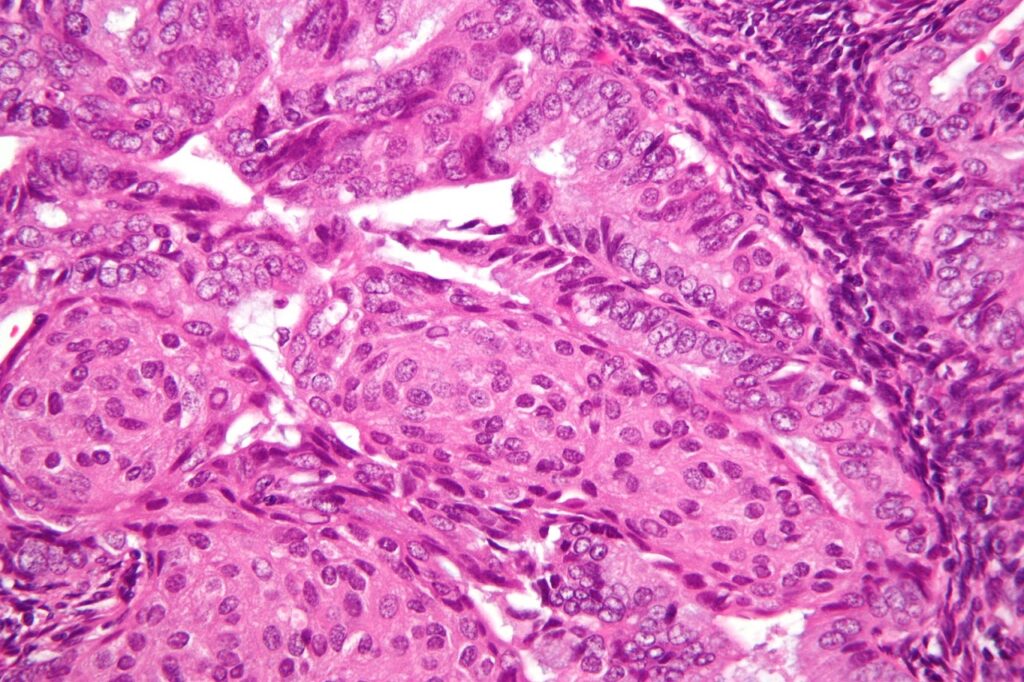The National Health Service (NHS) in England has announced that Dostarlimab, a drug to treat advanced womb cancer, will be rolled out for women in the country.

Endometrial cancer is the fourth most common cancer among women in the UK. Credit: Nephron/ commons.wikimedia.org.
Subscribe to our email newsletter
The drug attaches to a specific protein on the cancer cells’ surface and helps the immune system to detect and attack them.
Approximately 100 women with advanced and incurable endometrial cancer can get access to the drug every year after the NHS agreed early access to it via the Cancer Drug Fund.
The new treatment is given in 30 minutes through the blood stream, for every three weeks over a 12-week period.
Patients earlier had to undergo chemotherapy after their endometrial cancer returned following radiotherapy, surgery, and any other hormonal therapy.
NHS stated that the dostarlimab has fewer side effects compared with the existing clinical options.
Due to short treatment time, the drug is less burdensome for patients and provides hope of extending patients’ lives while improving their quality of life, NHS stated.
NHS England National Medical director Steve Powis said: “This is a significant moment for patients with advanced or recurrent endometrial cancer, as this new drug gives real hope to the around 100 patients a year who have had limited success with other treatments, taking just four 30-minute sessions, meaning it is also less invasive.
“This deal could only be made thanks to the Cancer Drugs Fund, which allows the NHS to get early access to the latest treatments, and is just the latest example of NHS England using its commercial capabilities to deliver on the NHS Long Term Plan commitment to provide patients with the latest cutting-edge treatments for cancer.”
Furthermore, additional data related to the clinical and cost effectiveness of the drug will also be collected to help NICE in making its final recommendation for the routine use of dostarlimab in the NHS.
Endometrial cancer is the fourth most common cancer among women in the UK. It occurs in the uterus lining and can potentially lead to severe symptoms such as vaginal bleeding following menopause or between periods and/or pelvic pain.
 Advertise With UsAdvertise on our extensive network of industry websites and newsletters.
Advertise With UsAdvertise on our extensive network of industry websites and newsletters.
 Get the PBR newsletterSign up to our free email to get all the latest PBR
news.
Get the PBR newsletterSign up to our free email to get all the latest PBR
news.

